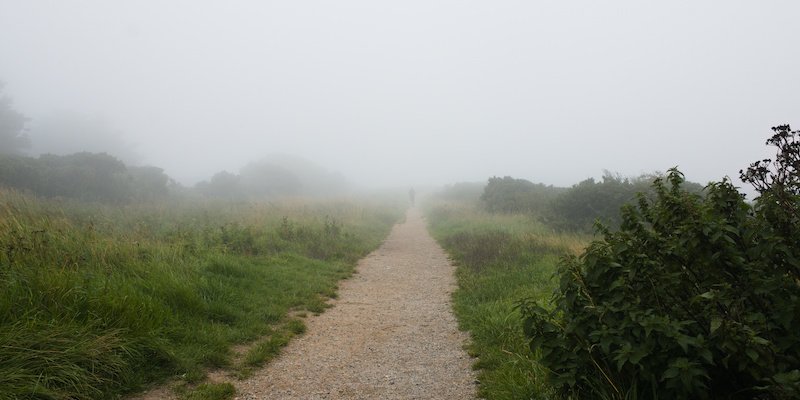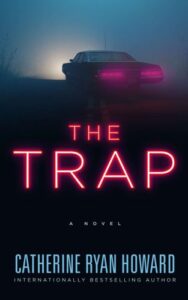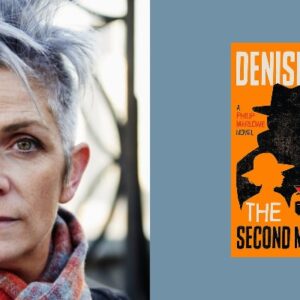There’s a lot of Irish female crime-writers. Liz Nugent, Jane Casey, Andrea Mara, Andrea Carter, Amanda Cassidy, Catherine Kirwan, Sam Blake—to name just half of the Irish crew who assembled in a town in the north of England last month for the Theakston’s Old Peculier Crime Writing Festival or ‘Harrogate’ to its friends. We met at the entrance to the Old Swan Hotel, festival HQ and the spot where Agatha Christie hid out for eleven days back in 1926, to take a group photo. I count fourteen faces in it, but that wasn’t even all the Irish female crime-writers at that particular festival, let alone sitting on the bookshelves today. Ireland is a country of five million people, about the same size as the state of Indiana, with a relatively low crime rate. So why are there so many Irish crime writers and why are the vast majority of them female?
This is a question we’re often asked in interviews, during the Q&A at literary festivals and by our puzzled friends and relatives. In the beginning, I offered vague, wishy-washy theories, just to have something to say besides, ‘Um, I dunno…?’ We’re writing the books we want to read and the people who study such things tell us that more women than men read crime, so it makes sense that more women than men would write it, too. It’s compensation for the fact that for decades, the genre seemed dominated by male writers, many of whom relegated their main female character to the cold, rigid body missing most if not all of her clothes and lying at the feet of the male detective (with a male partner, reporting to a male superior) in their opening scenes. Tana French doing it so amazingly well encouraged the rest of us. But none of those really explained why. I wasn’t even convincing myself with those answers.
Enter Liz Nugent, whose latest novel Strange Sally Diamond spent over two months at no.1 in the Irish bestseller charts. Liz will tell you that she didn’t realise she was writing a crime novel when she submitted her debut, Unravelling Oliver, to publishers, and I believe her. But she did us all a huge favour when she wrote an article called ‘The Gothic Horrors of 1980s Ireland: The Crimes and Hypocrisies that Inspired a Generation of Women’ for this very website back in 2018.
I’d recommend that you read it for yourself but, in brief, it described how in the 1980s, many of the stories that dominated the Irish news had a common theme: bad things were happening to women, and those women were not able to tell their own stories. We were our country’s second-class citizens, imprisoned by a society still in the Catholic church’s stranglehold—but also, as the decade wore on, starting to rail against this. The ‘veil began to fall and we saw the truth,’ Liz wrote, warning that, ‘you’re never going to shut us up now.’
I was born in 1982, so all I was watching on TV in the 80s were She-Ra: Princess of Power, Care Bears and Transformers. But it got me thinking. A decade later, when I was old enough to first become aware of the headlines on our nightly news, what were they reporting? What was happening to women in Ireland as I hurtled towards my adolescence, desperate to hurry up and become one?
The first woman to disappear was a twenty-six-year-old American who’d moved from Long Island, New York to Sandymount, Dublin. Annie McCarrick was recorded on CCTV in her local bank on March 26, 1993 – the last confirmed sighting of her, despite reports that she’d made it to Enniskerry, a picture-postcard village in the Wicklow Mountains, where she’d told friends she intended to go walking. In July of the same year, thirty-nine-year-old Eva Brennan left a family lunch in Terenure, Dublin, after an argument, and was never seen again. Imelda Keenan, twenty-two, was last seen crossing a road in Waterford city in the middle of a day in January 1994. Josephine ‘JoJo’ Dullard was twenty-one on November 9, 1995 when she called a friend from a phone-box in Moone, Co. Kildare, shortly before midnight, to explain that she was hitching her way home after missing a bus. JoJo ended the call by saying she had to go, she’d got a ride. Fiona Pender, twenty-five and seven months pregnant, disappeared on August 23, 1996. Ciara Breen, seventeen, February 13, 1997. Fiona Sinnott, nineteen, February 8, 1998. Deirdre Jacob, eighteen, July 28, 1998. Deirdre was last seen by passing motorists just steps away from her family home, but she never made it inside.
Eight women gone from the face of the earth in five years, although there is no official tally and no hard evidence that these cases are connected. The media dubbed it Ireland’s Vanishing Triangle, wilfully ignoring the fact that if you plotted the black holes that swallowed up these women on a map, it would make a sort of parallelogram. Now, the front pages of the papers my parents brought into our home were dominated by the official photos, the ones carefully chosen by the family because – you’d presume –they were the most up to date, most closely resembled what these women looked like the last time they were seen. We watched eerie re-enactments on TV and listened to heart-breaking interviews with their families. Eventually there’d be books, documentaries, podcasts and, coming soon, a TV drama.
But there were never any answers. The worst horror of all this was something we couldn’t have known then, and wouldn’t have imagined: that three decades later, we still don’t know what happened to any of those women and no one has ever been charged in connection with their disappearances.
When I, aged eleven, started paying attention to the news, the news was that the women in my country were disappearing and no one would or could do anything about it. You could take one of us and get away with it. No one would stop you. No one, terrifyingly, would even see you do it. This felt like a stark contrast to my childhood, when the plotlines of the made-for-American-TV true-crime movies I was oddly and age-inappropriately obsessed with felt like science fiction to me. Things like that didn’t happen here, we said. Mostly, it was true. But by the time I turned eighteen, we couldn’t say that anymore.
So maybe that is why there are so many Irish female crime writers, at least of my generation. While we were growing up, a faceless phantom snatched multiple women and no one did anything about it at all. Not one body was ever found. Whoever was responsible continues to get away with it. The families of Ireland’s missing women still wait for answers; some have died waiting.
I’m convinced I once heard the great Irish writer Edna O’Brien say that she wrote as a way to grieve for what she read in the headlines. Maybe the Irish female crime-writers my age are writing to rectify what we remember reading in them as teenagers. In our books, we create worlds in which no one gets away with taking us from them. We let people find the lost. We provide the answers for ourselves.
***


















